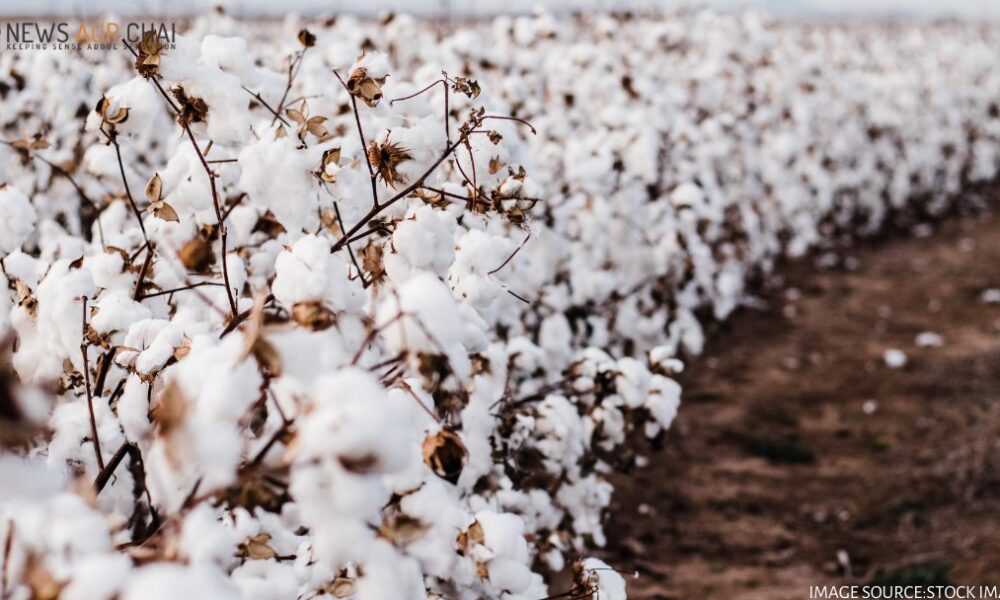Cotton has a history of about 7000 years. The moisture-absorbent fabric is known for its light texture and long durability, and you would often find a few cotton clothes in your wardrobe to appease the summer heat.
Cotton is one of the most important cash crops in India and attributes to around 25 per cent of the total global fibre production. India is the largest producer of cotton in the world, followed by the United States and China. Gujarat is the largest producer of this Kharif crop providing black soil for its growth. In 2019, cotton production in India amounted to around 5.77 million metric tons.
However, human civilization is incessantly hungry for more, and this perpetual curiosity has resulted both in rising and devastation. This curiosity led the cotton industry in India to attempt to revolutionize by introducing Genetically modified BT cotton in the year 2002. It is the sole GM crop currently grown in India and was introduced by Monsanto, under the trade name Bollgard, in a joint venture with the Indian seed company the Maharashtra Hybrid Seeds Co Ltd (Mahyco).
Today it accounts for 90 per cent of all cotton planting in the country. The small farms in the developing countries today have acquainted well to BT cotton and are the most widely planted genetically modified plants. The United States approved GM cotton for commercial use in the year 1995.
So, what is genetically modified BT cotton? Genetically modified BT cotton is produced by adding genes obtained from the soil bacterium Bacillus thuringiensis, which has over 200 different toxins. These toxins are harmful to various insects, and when an insect attacks the BT cotton plant, it gets killed.
The introduction of GM cotton promised to reduce the amount of pesticides used by the farmers, a significant expense incurred by them to control pests; increase the existing harvest and the flow of income by minimizing crop loss due to pest attacks. The minimum use of pesticides also promises to limit agricultural run-off polluting rivers and the food chain. This led to the first few years of massive commercialization of BT cotton in India. Some farmers heeded pesticides reductions and crop losses. However, the future since then has been grim.
The question which rises instantly is why is GM cotton doing more harm than good? Well, the cotton which grows naturally can be grown in a diverse variety. If one type gets infected by the pests, the farmers can resort to another variety. In contrast, with GM cotton the lack of variety leaves the farmers with only one option and hence when insects get resistance to the GM cotton, the farmers have nowhere to go which makes the situation problematic.
Campaigners have touted that BT cotton has exceedingly improved cotton productivity in India over the last ten years. Since the BT cotton was first introduced in India, 70 per cent of the 73 per cent yield increase reported between 2002 and 2005. However, then, less than 5 per cent of the area was allocated to growing BT hybrids of the total area under cotton production. Furthermore, the yield saw only marginal development of 2 per cent from 2005 to 2012, when up to 90 per cent of Indian cotton fields were cultivated with Bt cotton.
Another Indian farmer who is boldly advertising that he has planted HTBt cotton that Indian government wouldn’t care to approve, but he doesn’t give a damn! Farmer Shivaji Rakhonde is from A. T post Adgaon Bujruk, Tq-telhara, Dist-Akola, Maharashtra #Kisansatyagrah pic.twitter.com/s2dSh1N3do
— Channa Prakash (@AgBioWorld) July 20, 2019
Farmers of cotton growing areas have raised concerns about the ill- effects of BT cotton on their livestock as they either feel sick or die grazing the plant debris from cleared BT cotton fields and farmworkers who pick BT cotton have lamented respiratory allergic reactions.
As promised by the champions of the BT cotton of the reduced usage of pesticides remained unchallenged even though Government data reveal that pesticide usage has stayed the same or increased across the cotton belt as the insects have developed resistance to BT cotton. BT plants were profoundly defenceless to other insect pests that propagated as more and more farmers adopted the crop. The grim situation led to farmers spending more money on insecticides than before.
Sir @PMOIndia @nstomar @PrakashJavdekar Farmers should get full freedom for their seeds & technology to ensure higher & sustainable crop productivity, better environment. Protest at Akot #Maharashtra #KisanSatyagraha #HerbisideToleranceSeeds #BtBrinjal pic.twitter.com/hjmt513xvt
— Prakash Puppalwar (@PPuppalwar) June 10, 2019
Farmers movement , Anyone listening? #KisanSatyagraha https://t.co/kfgz0JioDp
— G. Ramamohan (@gramoo65) June 10, 2019
Furthermore, BT seeds are 3 to 8 times costlier than conventional hybrid seeds and more expensive than the local seeds farmers bought from local markets before. The BT seeds cost between 700 (13 dollars) to 2,000 rupees (38 dollars) per packet.
The promises made while introducing the GM seeds to the farmers seem nonviable and hollow. Farmers today are spending more on fertilizers and insecticides, and on seeds and are stuck in an inexorable situation regarding their livestock and health as well. It has yielded less agronomic benefits and ensued farming as capital concentrated business which has benefitted the conglomerates more and the farmers less.
